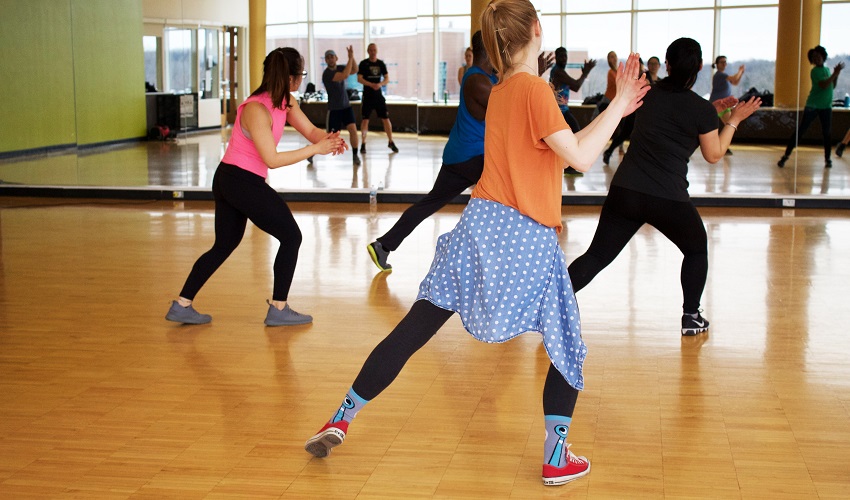Living with diabetes and arthritis can pose unique challenges, affecting the quality of life and overall well-being of individuals. Regular exercise plays a crucial role in managing blood sugar levels, maintaining joint flexibility, and enhancing muscular strength. However, high-impact exercises may not be suitable for individuals with arthritis due to the potential strain on the joints. In this article, we will explore a range of low-impact exercises that are particularly beneficial for diabetic individuals with arthritis. These exercises provide an effective way to promote strength, flexibility, and blood sugar management.
Understanding the Importance of Exercise for Diabetic Individuals
Exercise is a key component of diabetes management as it helps improve insulin sensitivity, glucose control, and cardiovascular health. Regular physical activity assists in lowering blood sugar levels, reducing the risk of cardiovascular complications, and contributing to weight management.
Joint-Friendly: Low-impact exercises minimize joint strain while improving flexibility and strength.
Dual Benefits: Combats diabetes complications and reduces arthritis symptoms simultaneously.
Benefits of Exercise for arthritis patients
Exercise is equally important for individuals with arthritis as it helps maintain joint flexibility, reduces pain and inflammation, and preserves overall functionality. It also contributes to weight management, enhances bone health, and boosts mood and well-being.
The Impact of Arthritis on exercise choices
Arthritis can limit exercise choices due to joint pain and stiffness. High-impact activities such as running or jumping can exacerbate arthritis symptoms and potentially cause further joint damage. Therefore, low-impact exercises are preferred as they provide a safer alternative, allowing individuals to maintain an active lifestyle without worsening joint pain or inflammation.
Low-Impact Exercises for Diabetic Individuals with Arthritis
Walking
Walking is a gentle and accessible exercise that can be tailored to individual needs and abilities. It improves cardiovascular health, strengthens leg muscles, and supports weight management. Starting with short walks and gradually increasing duration and intensity can help achieve optimal benefits.
Swimming and Water Aerobics
Water-based exercises such as swimming and water aerobics are excellent options for individuals with arthritis as they provide buoyancy, reducing stress on the joints. These activities enhance cardiovascular fitness, improve flexibility, and strengthen muscles without straining the joints.
Cycling
Cycling is a low-impact exercise that promotes cardiovascular health and leg muscle strength. Whether using a stationary bike or cycling outdoors, it offers an effective workout while minimizing joint impact. Adjusting the intensity and duration based on personal comfort levels is important.
Tai Chi
Tai Chi is a gentle and slow-paced exercise that incorporates flowing movements and deep breathing. It improves balance, and flexibility, and promotes mind-body connection. Tai Chi is suitable for individuals with arthritis as it enhances joint mobility without excessive stress.
Water Aerobics: Provides 90% joint relief compared to land-based exercises.

Yoga
Yoga combines gentle stretching, controlled breathing, and relaxation techniques. It improves flexibility, and muscle strength, and reduces stress. Look for yoga classes specifically designed for individuals with arthritis or consult a qualified instructor who can modify poses to suit individual needs.
Resistance Training
Resistance training using light weights, resistance bands, or bodyweight exercises helps build muscular strength, providing added joint stability. Focusing on exercises that target major muscle groups while avoiding excessive strain on affected joints is key.
Chair Exercises
Chair exercises are suitable for individuals with limited mobility or those who need additional support. These exercises can include seated stretches, leg extensions, and upper-body movements. They help maintain joint flexibility and overall muscle tone.
Designing a Safe and Effective Exercise Routine
Before starting any exercise program, it is crucial to consult with healthcare professionals, including primary care physicians and physical therapists. They can provide personalized guidance based on specific medical conditions and individual needs.
Setting Realistic Goals and Gradually Increasing Intensity
Starting with manageable exercise durations and intensities and gradually increasing them over time is essential. Aim for a minimum of 150 minutes of moderate-intensity exercise per week, or as advised by healthcare providers.
Monitoring Blood Sugar Levels during Exercise
Regularly checking blood sugar levels before, during, and after exercise is important to prevent hypoglycemia (low blood sugar) or hyperglycemia (high blood sugar). Making adjustments to medication or carbohydrate intake as necessary is crucial.
Incorporating Warm-up and Cool-down Periods
Prior to exercise, warming up with gentle stretches or low-intensity movements prepares the body for physical activity. Afterward, cooling down with additional stretches aids in muscle recovery and prevents stiffness.
Listening to Your Body and Adapting Exercises as Needed
Paying attention to the body’s signals and modifying exercises accordingly is vital. If an exercise causes pain or discomfort, reducing the range of motion or intensity, or trying a different exercise altogether, is recommended.
Blood Sugar Management during Exercise
Exercise generally lowers blood sugar levels, so it is important to monitor and adjust diabetes management accordingly. However, intense or prolonged exercise can cause blood sugar to drop too much.
Monitoring Blood Glucose Levels Before, During, and After Exercise
Regularly checking blood sugar levels before, during, and after exercise helps gauge the impact of exercise on blood sugar. If blood sugar levels are too high before starting, consulting with healthcare providers on appropriate measures is necessary.
Carbohydrate Consumption and Timing for Optimal Energy
Consuming a small snack or glucose-rich food before exercising can help prevent low blood sugar. For longer or more intense activities, carrying a source of fast-acting carbohydrates can address hypoglycemia if needed.
- Monitor your blood sugar levels.
- Keep a source of quick carbohydrates (like glucose tablets) handy to prevent hypoglycemia.
Safety Precautions and Tips
Choosing shoes with good cushioning and support minimizes joint impact. Using additional support gear such as braces or orthotics, if necessary, is recommended.
Being Mindful of Joint Pain and Inflammation
Modifying or avoiding exercises that cause significant pain or swelling in the joints is important. Listening to the body’s signals and prioritizing exercises that are comfortable and well-tolerated is key.
Staying Hydrated and Maintaining a Balanced Diet
Drinking plenty of water before, during, and after exercise helps stay hydrated. Following a balanced diet that supports overall health and diabetes management is crucial.
Incorporating Rest and Recovery Days into the Exercise Routine
Allowing time for rest and recovery between exercise sessions promotes muscle repair, reduces the risk of overuse injuries, and prevents excessive joint strain.
The Role of Caregivers in Supporting Exercise
Providing positive reinforcement, celebrating achievements, and offering words of encouragement help individuals stay motivated in their exercise routine.
Assisting with Monitoring Blood Sugar Levels during Exercise
Assisting individuals in monitoring their blood sugar levels before, during, and after exercise helps ensure their safety and well-being. Being prepared to provide assistance or support in case of hypoglycemic episodes is important.
Creating a Supportive and Safe Environment
Ensuring the exercise environment is free from hazards and obstacles that may pose a risk to individuals with arthritis is crucial. Helping individuals find suitable exercise facilities or classes that cater to their needs supports their exercise journey.
Engaging in regular low-impact exercises significantly benefits diabetic individuals with arthritis by promoting strength, flexibility, and blood sugar management. By incorporating the discussed exercises into their routine and following safety precautions, individuals can enhance their quality of life and reduce the impact of both conditions. Working closely with healthcare professionals and listening to the body’s needs while establishing a safe and effective exercise regimen is essential. With dedication and support, individuals can achieve a healthier and more active lifestyle.




